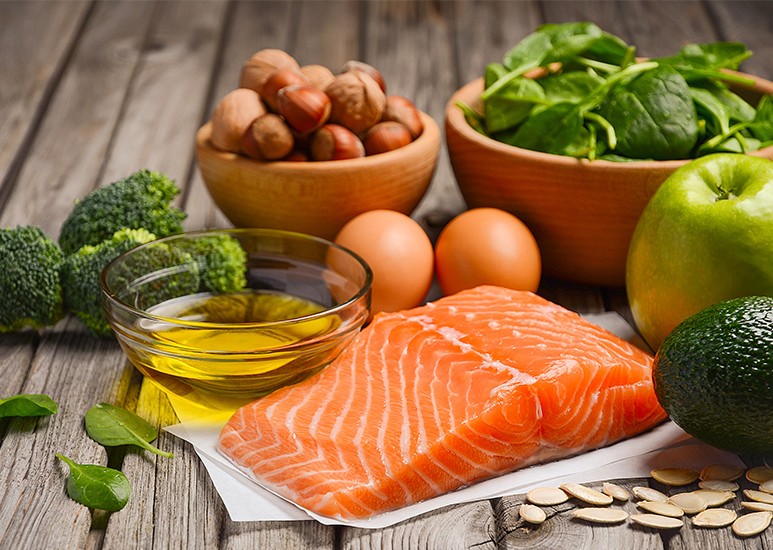
There has been a lot of contradicting advice concerning how much fat to include in your diet, from the low-fat diet fads of the 1990s to the high-fat ketogenic diet. Each healthy, balanced diet should contain some fats. They are necessary for providing your body with energy, allowing it to absorb specific nutrients, safeguarding your organs, and assisting with temperature regulation. Additionally, fats give food a great flavor and texture and aid in slowing digestion, which increases fullness (being full).
Unsaturated and saturated fats are the two primary forms of fat found in the diet, and each type has unique properties and medical implications.
UNSATURATED FATS
Monounsaturated fats (MUFAs) and polyunsaturated fats are examples of unsaturated fats (PUFAs). These fats may be found in a variety of plant-based and fish-based diets and are liquid at room temperature. Unsaturated fats can raise blood cholesterol levels when consumed in place of saturated fats, lowering your risk of heart disease.
Some oils (such as olive, canola, peanut, sesame, and safflower), avocados, peanut butter, and a variety of nuts and seeds are examples of monounsaturated fats. Soybeans and tofu, maize, sunflower seeds and oil, ground flaxseed, fatty fish, and walnuts are a few sources of polyunsaturated fats.
A form of polyunsaturated fat called omega-3 fatty acids may be particularly good for your heart. Omega-3 fatty acids are found in the highest concentrations in fatty fish, including tuna, salmon, trout, mackerel, herring, and sardines. Pumpkin seeds, flaxseed, chia seeds, walnuts, soy products, and chia seeds are examples of plant-based sources of omega-3 fatty acids.
SATURATED FATS
According to research, saturated fats can increase LDL and total cholesterol levels in the blood, which can increase the risk of cardiovascular disease. Use the abbreviation SAT to help you recall which foods are sources of saturated fat. S indicates solid, such as butter or lard that is left out on the counter. A stands for animal sources, which include red meat and whole milk. T stands for tropical oils like palm and coconut oil
Replace Unhealthy fats with Healthy fats.
By consuming less saturated fats and more unsaturated fats, you can enhance your diet.
Instead of using solid fats like butter, lard, or shortening for cooking and baking, use liquid oils.
Make your salad dressing instead of buying bottled, creamy dressings by using heart-healthy oils like olive oil, walnut oil, or avocado oil. Add your preferred herbs and combine two parts oil with one part vinegar before enjoying!
Add ground flaxseed to your yogurt, pancake batter, smoothies, porridge, and muffin mix.
Spread nut butter on whole grain toast, add some nuts or seeds to salads for extra crunch or go for some pistachios when you’re hungry. Just be aware of portion sizes and limit yourself to servings of approximately ¼ cup .
For a more creamy texture, add avocado to salads and sandwiches or blend some into your morning smoothie.
Chia seeds expand when exposed to liquids, giving them a texture similar to pudding. You can make chia seed pudding at home by mixing yogurt, a little maple syrup, and your preferred milk.
Instead of some meats and poultry, consider protein alternatives from plants and fish.
Pick lean beef or poultry cuts. Remove skin from birds and trim or drain fat from meat.






